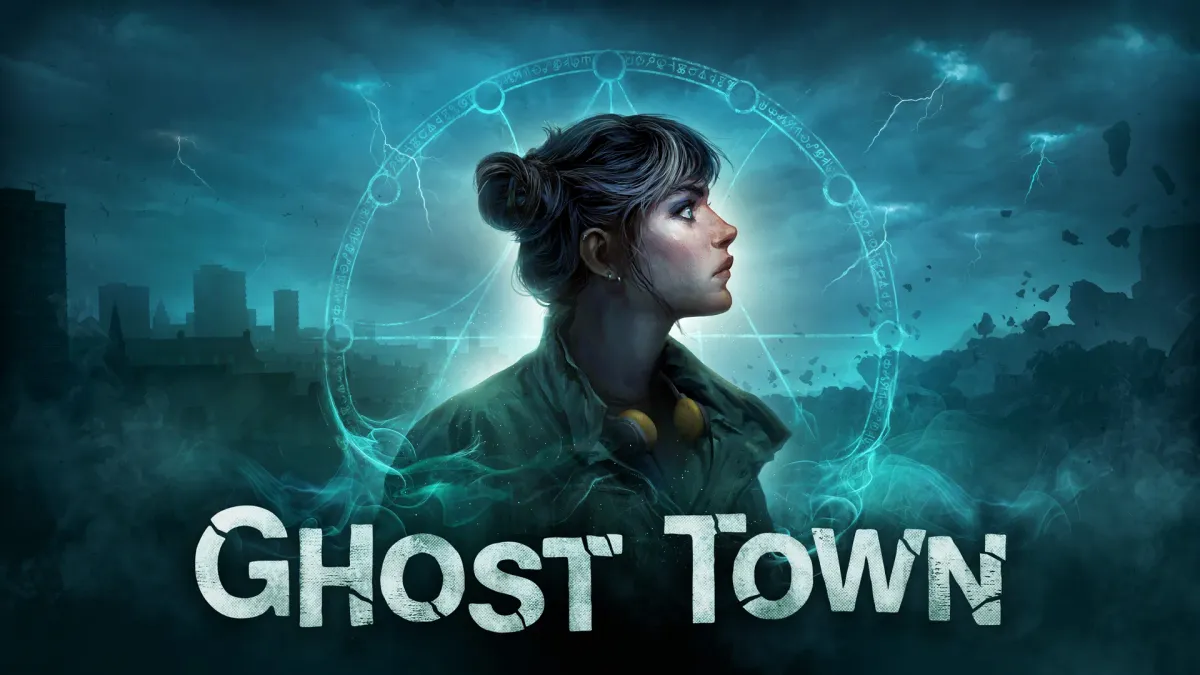
This is our favorite MagGo power bank.
The post Anker Handed Amazon Millions of MagSafe Power Banks to Clear, Now Going for Black Friday Record Low appeared first on Kotaku.


This is our favorite MagGo power bank.
The post Anker Handed Amazon Millions of MagSafe Power Banks to Clear, Now Going for Black Friday Record Low appeared first on Kotaku.

You won’t run out of storage ever again with this 20TB hard drive in your setup.
The post WD 14TB External Hard Drive Restocks at $0.01 per GB, Proving Margin Isn’t the Plan for Storage Deals This Black Friday appeared first on Kotaku.

It measures heat 40 times per second, spins at 110,000 RPM and dries hair fast safely.
The post Dyson Leverages Amazon to Clear Supersonic Nural Stock, Premium Hair Dryer Hits All-Time Low appeared first on Kotaku.

Upgrade your gaming setup with a glare-free 32-inch HDR10 Odyssey monitor with super-low motion blur for only $200.
The post Samsung Is Cleaning House on Curved Gaming Monitors, 32″ Odyssey Now Costs the Same as the Discounted 27″ for Black Friday appeared first on Kotaku.

It lasts 40 hours per charge and cancels noise completely.
The post Beats Studio Pro Now 3x Cheaper Than AirPods Max, Apple Makes Zero Profit Play on Beats appeared first on Kotaku.

Happy Thanksgaming 2025 everybody! Celebrate with a huge pile of unknown indies to put on your radar
The post 20 Incredible, Innovative Indie Games To Wishlist This Thanksgiving appeared first on Kotaku.

For a limited time, you can save $62 on the Sony S100F 2.0ch soundbar with a bass reflex speaker.
The post Sony Soundbar Is Now as Cheap as Budget Earbuds After Hitting Its Lowest Price, Selling Out Faster Than Expected appeared first on Kotaku.

Experience 4K gaming with ray tracing, ultra-fast SSD loading, and haptic feedback controllers.
The post Sony Offloads PS5 Disc Edition Bundle with NBA 2K26, Now Cheaper Than Digital Model Alone appeared first on Kotaku.

It brings over a million free and paid TV shows, plus movies to you in a compact frame.
The post Fire TV Stick HD Gets a 49% Black Friday Cut as Amazon Stops Caring About the Price on This Streaming Device appeared first on Kotaku.

Possibly the best gaming laptop deal of Black Friday.
The post Asus Offloads 16″ Gaming Laptop (RTX 4050, 512GB, Core 5), Now Cheaper Than Generic Budget Models appeared first on Kotaku.

Unfolds into 8 inches, shoots 200MP photos, runs three apps simultaneously.
The post Samsung Enters Chaos Mode, Now Selling Galaxy Z Fold7 at Record Low and Cheaper Than Old Fold6 appeared first on Kotaku.

Amazon has the Anker Prime USB-C 3-in-1 charging block on sale for 33% off this Black Friday.
The post Anker Is Clearly Skipping Margin on the Newly Released 160W Prime Charger, All-Time Low for Black Friday appeared first on Kotaku.

The MacBook Pro M5 is one of the most powerful laptops you can buy.
The post Apple Offloads New MacBook Pro M5, Now Selling Cheaper Than Older M4 Models appeared first on Kotaku.

Be productive on the go by adding a second screen to your setup.
The post Amazon Is Practically Dumping the 15.6″ Portable Monitor After Selling Thousands Last Month, Black Friday Makes the Price Even Wilder appeared first on Kotaku.
VR survival game Bootstrap Island is heading to PlayStation VR2 next year.
Launched in early access last year on Steam, Bootstrap Island is a 17th-century survival game where you play as Daniel, a castaway who’s become stranded on a tropical island. Featuring a reactive roguelike environment with different biomes, a day-and-night cycle, shelter building, progression systems, and more, that’s now heading to PS VR2 in 2026.
0:00
Revealing more about this upcoming port on PlayStation Blog, developer Maru VR detailed its planned PlayStation VR2-specific features. Bootstrap Island will use eye tracking for foveated rendering, headset haptic feedback during storms and near-death encounters, and adaptive trigger support for your weapons.
Today’s news follows this month’s PC VR launch of the Visions update, which marks Bootstrap Island’s last major update before next year’s full release. This introduced a new sickness and hallucinations system that warps reality as the illness spreads, a story-driven tutorial that reveals more about Daniel’s backstory, new environmental features, and more.
Bootstrap Island: Visions is now live on Steam Early Access, with a full release targeting Q1 2026. The PlayStation VR2 edition will follow “in 2026,” though it’s unclear if this will arrive simultaneously with the PC VR edition’s full release.

Want the bundle packs? You’ll need Prime for those.
The post Amazon Posts “Hidden Price” on Mini 4K Drones for Black Friday, DJI Blocks Displaying Such Record Low appeared first on Kotaku.

Save up to $250 on a high-performance gaming SSD ahead of Black Friday.
The post Samsung 9100 PRO SSD Falls Below $0.10 per GB Across All Capacities, Black Friday Just Broke the Price Floor appeared first on Kotaku.
Ghost Town, one of 2025’s best VR games, launches next week on PlayStation VR2.
Having received a staggered release this year on Quest and Steam, supernatural puzzle adventure Ghost Town is now heading to PlayStation VR2. Set in the UK in the ’80s, you play as ghost hunter and exorcist Edith Penrose who runs a paranormal detective agency with her flatmate. You’re tasked with tackling London’s restless spirits, all while trying to find her missing brother.
We’re pleased to announce Ghost Town is coming to PlayStation VR2 on 1st December, just in time for Christmas�!
We know it’s been a long time coming, but it will be worth the wait�
bit.ly/Ghost_Town_P…#PSVR2 #PlayStation #VR #VRgames #GhostTown
— Fireproof Games (@fireproofgames.com) 2025-11-27T10:49:19.959Z
Though we’ve known since its initial announcement that a PlayStation VR2 port was coming, developer Fireproof Games (The Room VR) has now confirmed a release date via social media. However, it’s unclear if this upcoming port will use PS VR2-specific features like adaptive triggers and eye tracking. We’ve contacted the studio, and we’ll update this article if we learn more.
We had high praise for Fireproof’s latest in our Ghost Town review back in April. Calling it “an utterly engrossing supernatural VR adventure,” we awarded it 4.5/5 stars and later revisited the game following July’s PC VR launch.
It’s not a stretch to say that Ghost Town is one of the best VR games so far this year. Fireproof Games has delivered a worthy spiritual successor to The Room VR that employs a similarly strong level of VR interactivity, backed up by great visuals on Quest 3, a thoroughly engrossing supernatural narrative and intuitive puzzles.
Ghost Town is out now on Quest and SteamVR, while the PlayStation VR2 release arrives on December 1.
 UploadVRHenry Stockdale
UploadVRHenry Stockdale

The best fitness tracker for everyday.
The post Fitbit Adopts Zero-Profit Play on Charge 6 Fitness Tracker This Black Friday, Selling at New All-Time Low appeared first on Kotaku.

Adapts noise cancellation automatically, optimizes sound with AI and translates conversations in real-time.
The post Samsung Quietly Supplies Amazon Millions of Galaxy Buds 3 Pro to Clear Stock, Now at New All-Time Low appeared first on Kotaku.